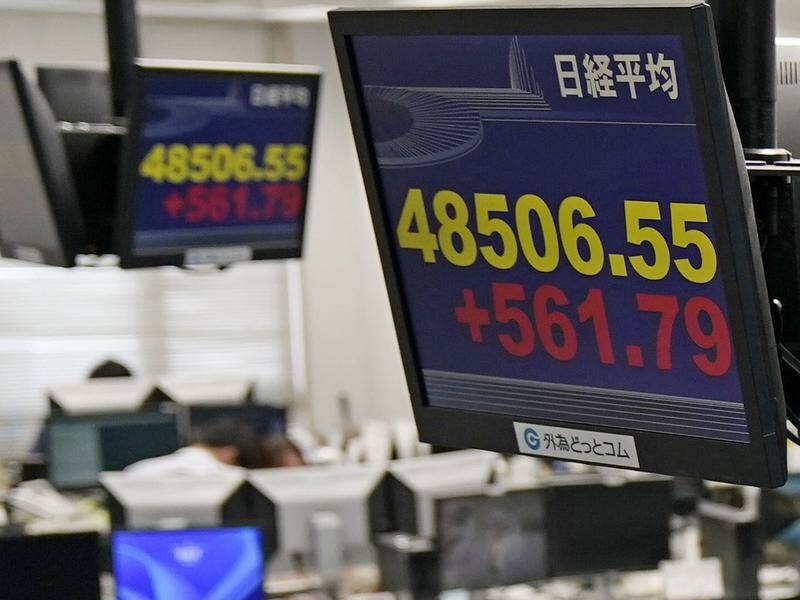
A significant rise in Japan’s Nikkei index has driven Asian markets upward as political changes unfold in Japan and economic indicators from China exceed expectations. The Nikkei jumped by 2.8 percent, buoyed by developments suggesting that Japan could soon appoint its first female prime minister, Sanae Takaichi. This positive momentum has influenced other Asian markets, with investors reacting to both domestic and international economic signals.
China’s economy reported a growth rate of 1.1 percent for the third quarter, surpassing forecasts. Additionally, industrial output rose by 6.5 percent, indicating a potential resilience in the face of ongoing trade tensions with the United States. Despite these encouraging figures, China’s annual growth rate of 4.8 percent represents the slowest expansion in a year, highlighting ongoing challenges within its property sector. A continued decline in property prices suggests that the sector remains a significant drag on overall economic growth and household spending, with retail sales only increasing by 3.0 percent year-on-year.
Investors are optimistic about possible stimulus measures, as Chinese policymakers prepare to discuss elements of the latest Five-Year Plan this week. Past meetings have often disappointed markets, but there is hope for a proactive approach to support the economy. In the United States, President Joe Biden suggested he could consider lowering tariffs on Chinese goods if Beijing resumes purchases of American soybeans.
Looking ahead, figures expected on October 13, 2023 are projected to show that US core inflation remained steady at 3.1 percent in September. Analysts believe this data will not disturb market expectations, particularly as the Federal Reserve has not countered pricing for anticipated rate cuts. Michael Feroli, head of US economics at JPMorgan, noted, “Chair Powell has highlighted the importance of signs of a weakening job market in the Fed’s policy considerations.” This aligns with expectations that the Federal Open Market Committee (FOMC) will reduce rates again at its next meeting in just over two weeks.
Japan’s political landscape is also a focal point for investors. The coalition agreement between the Liberal Democratic Party and the Japan Innovation Party supports expectations that Takaichi will advocate for economic stimulus and resist further interest rate hikes. This stance could negatively impact the yen and bonds but is seen as a boost for equities. Following Japan’s lead, South Korea’s shares increased by 1.0 percent, while the broader MSCI Asia-Pacific index, excluding Japan, rose by 1.3 percent. Chinese blue-chip stocks gained 1.0 percent, recovering some losses from the previous week.
European markets also reflected this positive sentiment, with EUROSTOXX 50 futures up by 0.6 percent and DAX futures also increasing by 0.6 percent. Wall Street futures showed modest rises, with both S&P 500 and Nasdaq futures climbing by 0.2 percent. Analysts predict that S&P 500 companies will report earnings growth of 8.8 percent for the third quarter, with technology firms leading the charge. Bank of America analyst Savita Subramanian expects a substantial 20 percent rise in the tech sector, driven in part by Nvidia, which alone is projected to contribute a quarter of the overall earnings growth.
The bond market has responded to the prospect of rate cuts, with yields on ten-year US Treasuries falling nearly 14 basis points last week to 4.011 percent. This decline has influenced currency markets, with the US dollar experiencing pressure against both European and higher-yielding currencies. The euro rose to $1.1656, despite a surprise credit downgrade of France, while the dollar climbed by 0.3 percent to 151.06 yen.
In commodities, gold has maintained high demand, recently surging nearly 6 percent to around $4,378.69 per ounce. Currently, it trades at approximately $4,263, with a support level at $4,200. Lorenzo Portelli, head of cross-asset strategy at Amundi Investment Institute, forecasts that gold prices could reach $5,000 per ounce by 2028, driven by structural changes in demand from both investors and central banks.
Oil prices remain under pressure due to ample supplies, as OPEC+ continues to increase production. Brent crude slipped by 0.4 percent to $61.02 per barrel, while US crude fell by 0.5 percent to $57.24 per barrel.
As the week unfolds, the interplay of political developments in Japan, economic data from China, and corporate earnings reports in the US will be crucial in shaping market sentiment. With potential rate cuts on the horizon, investors are keenly observing these evolving trends.






